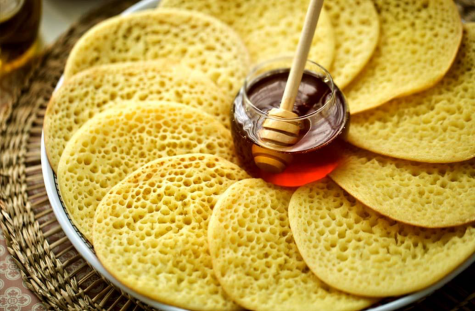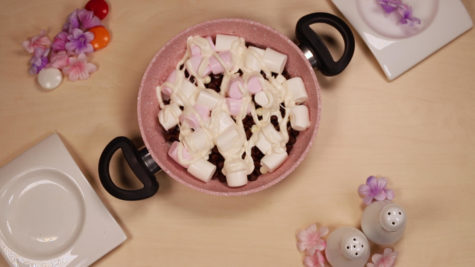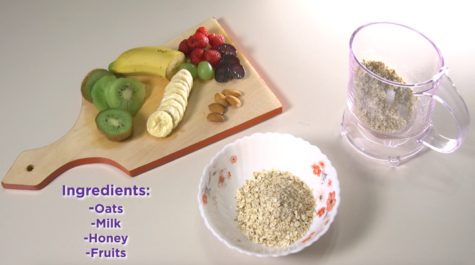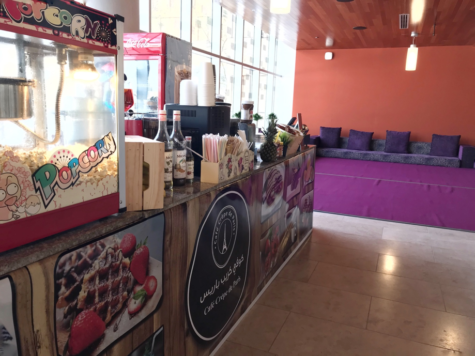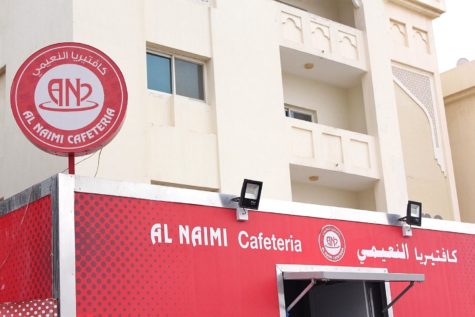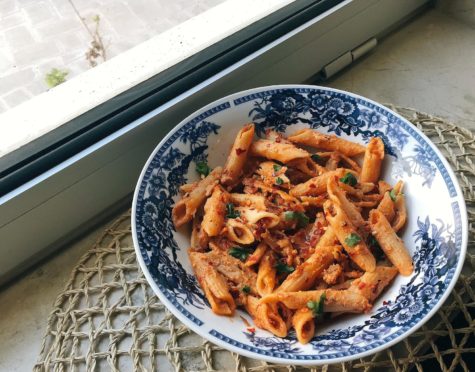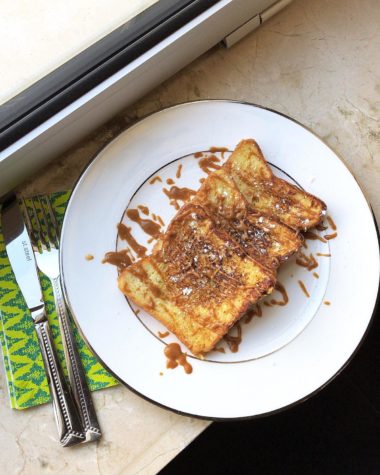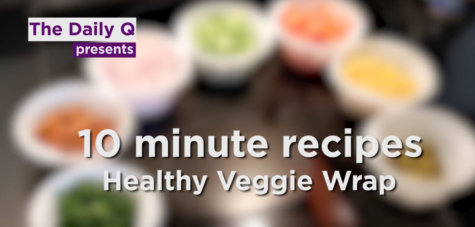Your Budget Friendly Guide to Eating Healthy
Trying to eat healthier meals can be difficult when you are a university student struggling to find time and to save money for yourself. Cade Aguda, a freshman at Northwestern University in Qatar, switched from being a vegan to being a vegetarian due to this. “It felt like an inconvenient and expensive option,” said Aguda, stressing on how vegan options in Doha are generally very basic and unsatisfying or are outside of his daily budget. Evergreen Organics, a vegan cafe, for example he said, has great options but is too expensive for its small portion size.
Many university students, including Aguda, try to find simpler alternative ways to eat healthy on their budget, outside of the realm of veganism. Here are some ways you can try this out too:
Get cooking!

While the idea of cooking might seem daunting or time consuming, it does not necessarily have to be. Students living in the dorms without a stove often buy a rice cooker, available for as low as 60 QAR at most grocery stores in Qatar. This rice cooker can be used to boil rice and pasta or to make lentil soup. Some students even fully cook food in it – a little oil or butter in the pan within the rice cooker can go a long way. Moreover, having control over the food you eat by preparing meals yourself ensures that you are utilizing healthier options within your diet.
Know your cheese

Cheese, thought of as a fatty, dairy product, is supposed to be a big no-no when it comes to eating healthy, but it really does not have to be! Cheese in and of itself is a great source of calcium and protein, and therefore contributes to making you feel energized and strong. Many types of cheese are high in sodium and fats, but some contain essential nutrients and have a relatively lower fat content. Feta, cottage cheese, mozzarella, goat cheese and cheddar are relatively healthier than other types of processed cheese and can, therefore, accompany some of your meals in small helpings or can be eaten alone as a snack without much guilt or fear.
Load up on veggies and fruit

The best thing about vegetables and fruit is that they are some of the most affordable food products out there. Vegetables like cucumbers and carrots, costing just around 7 QAR per kilogram, keep you hydrated and can be munched on at any time of the day––eat them with a healthy hummus dip for some extra flavor. Similarly, apples generally cost 4 QAR per pack and are extremely filling and nutritious. Add greens like lettuce to your sandwiches for a flavorful crunch and an important dose of minerals, such as potassium and calcium, and vitamins such as vitamins A and C. Simply adding a few of your vegetables or fruits of choice to any meal not only makes the meal more filling, but also ensures that your body stocks up on necessary nutrients.
Focus on portion size management

Balancing the size and proportions of your meals can help you control the calories you consume daily and the nutrients you include in your diet. Being a student and finding the time for breakfast can be challenging. However, it still remains the most important meal of the day. This is mainly because a bigger breakfast curbs cravings for the rest of the day. Try to eat as much as you can in the morning and gradually decrease your portion size through the day, eating the smallest portion size at night for dinner. Balancing your meals with a good protein to vegetable ratio will also make your meals more filling. Ayesha Iqbal, a freshman at Georgetown University in Qatar, for example says that for every small piece of protein (such as meat, beans or nuts) she has, she balances it out with a medium serving of vegetables or fruit to ensure that she gets both fiber and protein in one meal.
Carbs are sneaky

While carbohydrates are an instant source of energy, refined carbohydrates (such as white bread or pasta) and sugar are far from nutritious. Therefore, it is better to be careful about what carbohydrates you are including in your diet. High-fiber carbs, such as fruits and vegetables, and whole grain products, such as brown bread or brown pasta, are much better for you and should replace your other carbohydrate sources. Switch your white bread for brown bread and white pasta for brown pasta. Healthier alternatives can be found in most grocery stores in Doha. You can even use cauliflower, an inexpensive vegetable, as a carbohydrate replacement entirely.
Snack smartly

Working late will inevitably make you peckish. However, eating processed foods such as crisps and biscuits that are full of saturated fats and sugars is not the best way to deal with this. Here are some healthier snacks you can use to beat those late-night cravings: unsalted trail mix packs, Greek yoghurt or fruit yoghurt, your preferred vegetable with hummus or feta cheese, mozzarella cheese sticks (the unfried kind), apple slices with peanut butter, plain digestive biscuits, protein bars and dark chocolate.
Fizzy drinks are not your friend

A mixture of sugar and chemicals, a fizzy drink is a risky beverage to have in your diet. Thus, it is best to stay away from them. Natural fruit juices are better alternatives to this. Carrefour, for example, sells freshly made fruit juice, ranging from grapefruit to apple to orange, that cost 10 QAR per bottle. You could also buy a small citrus juicer (this costs between 60 QAR to 80 QAR) to make orange juice or grapefruit juice for yourself, anytime anywhere.
Stay hydrated!

Water, apart from its value as a life essential, is extremely useful at keeping you healthy. Water maintains your body fluids and helps with your digestion; this impacts your weight, your skin and your health in general. Water is also a good caffeine-fix, it keeps your body going which is incredibly important in university. Keep a bottle with you at all times as there are water fountains all over Education City to fill it up with. If you are not comfortable with a water fountain, water generally costs between 2 QAR to 5 QAR and so it should not be difficult to buy (even if it is, your life is a worthy investment).
Sleep. Sleep. Sleep.

This is a particularly difficult goal to meet, I know. Try to get at least seven hours of sleep. Your body, healing while you sleep, rejuvenates itself before a refreshing start to the next day. Lack of sleep negatively impacts your attention span, your memory, your weight and your mental health. So please, go to sleep!
Don’t stress about eating a certain way too much

It’s alright if you can’t adhere to all of these all the time. It is understandable. As long as you are able to find small ways to conveniently make your diet healthier, then you should be fine. A cheat meal once a week is perfectly alright and will not drastically change your health goals.
Additionally, here are some recipes you could use to help make your daily diet healthier:
Mashed Potatoes with Grilled Chicken and Vegetables (courtesy of Giordana Bido, freshman at NU-Q)
Mashed potato:
Ingredients:
- 1 boiled potato
- 1 teaspoon of butter
- 1 tablespoon of milk
Method:
- Mash together the potato, butter and milk.
Grilled Chicken:
Ingredients:
- Butter or oil, enough to coat the pan in your rice cooker
- One chicken breast fillet
- Salt and pepper to taste
Method:
- In your rice cooker add the oil or butter depending on your preference.
- Cut one chicken breast fillet into cubes
- Grill the cubes in the oil/butter.
- Add salt and pepper to taste and your choice seasonings.
Vegetables:
Boil your favorite vegetables in your rice cooker.
Cauliflower Pizza
The cauliflower crust (based on a recipe from here)
Ingredients:
- 2 ½ cups of grated cauliflower
- ½ teaspoon of dried basil
- ½ teaspoon of dried oregano
- ½ teaspoon of garlic powder
- ¼ cup shredded Parmesan cheese
- ¼ cup shredded mozzarella cheese
- Salt and pepper to taste
- 1 egg
Method:
- Preheat your oven at 425 degrees Celsius.
- Grate the cauliflower using a cheese grater (you can even finely chop it using a knife or if you have a food processor or blender, you can use those instead).
- Warm the cauliflower pieces in the microwave for 2 to 4 minutes to soften them. Use a strainer and a scraper to strain out the excess moisture (you can wrap the pieces in a thin cloth or kitchen towel and squeeze the moisture out if you don’t have a strainer).
- Add the cheese and seasoning (you can use 1 ½ cup of whatever seasoning you prefer instead too) to the cauliflower mixture and salt and pepper.
- Beat in the egg.
- Press the mixture into an even layer on a circular baking tray lined with baking/parchment paper.
- Bake the crust for 15-20 minutes (until it is golden brown).
- Take the crust out of the oven and top it with toppings (such as grated cheese, vegetables and pizza sauce) of your choice.
- Place the pan back in the oven for 5 to 7 minutes until the cheese has melted.
Microwaveable Eggs (courtesy of Ayesha Iqbal, freshman at GU-Q)
Ingredients:
- 1 Onion, chopped
- Some baby spinach, chopped
- 1 tomato, chopped
- 1 egg
- Salt and pepper to taste
Method:
- In a microwave-safe bowl, whisk the egg and add the vegetables and seasoning, whisk again.
- Microwave the egg mixture for 1 ½ minutes at 1000 Watts.
Bean Salad (modified from a recipe from here)
Ingredients for Salad:
- 1 can of your favorite beans (e.g. chickpeas or kidney beans)
- 1 can of sweet corn
- 1 capsicum, chopped
- ¼ cup fresh lettuce
Ingredients for Dressing:
- ½ cup vinegar
- ¼ cup olive oil
- 1 tablespoon of sugar
- 2 teaspoons of ground cumin
- ½ a lemon, squeezed (optional)
- ½ teaspoon salt
- ¼ teaspoon pepper
Optional topping:
- Feta Cheese
Method:
- Whisk the dressing ingredients together and set aside.
- Drain the beans and the corn, add amounts of your choice to a bowl––– a typical single serving would be half a cup of each.
- Mix the beans, corn, capsicum and lettuce together
- Drizzle the dressing over the salad mixture and toss the ingredients together
- Add cubed or crumbled feta cheese onto the salad (optional)
- Eat on its own or serve with tortilla chips
Peanut Butter Mug Cake (modified from a recipe from here)
Ingredients:
- 4 tablespoons of flour
- ¼ teaspoon baking powder
- 2 tablespoons of peanut butter
- 5 tablespoons of milk
- 1 tablespoon of maple syrup or honey (optional)
- 1 tablespoon of dark chocolate chips/chopped dark chocolate (optional)
Method:
- Mix all the ingredients in a mug.
- Microwave at medium or high heat for 50 seconds in 10 second bursts until the cake has risen (test with a fork or a spaghetti stick, if it comes out clean then cake is cooked through).



